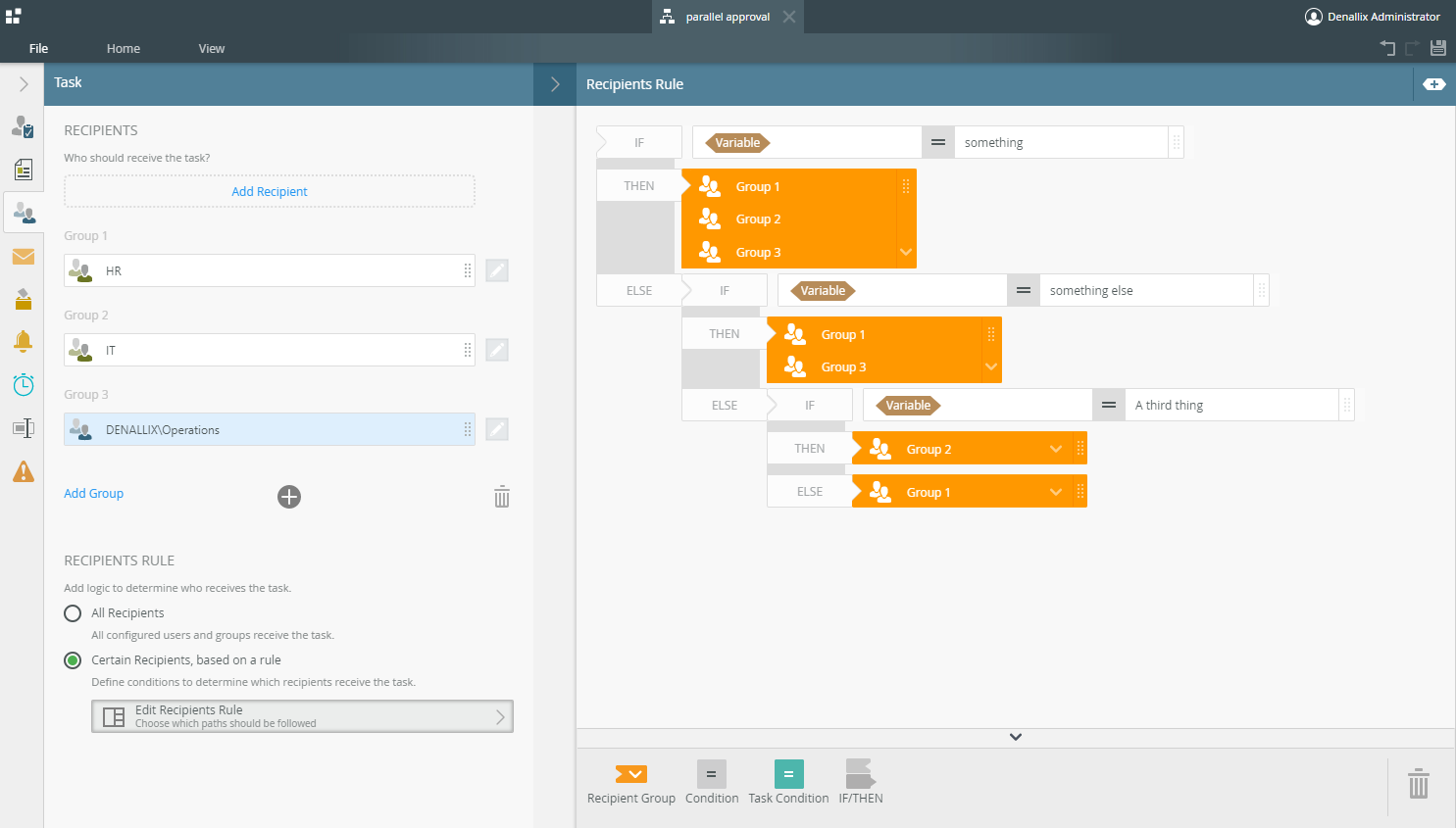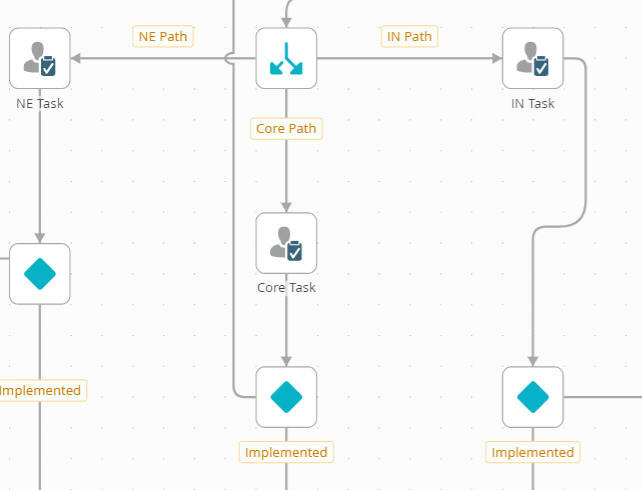Hi,
Could you provide us a bit more details about the setup of your workflow (NE Path/Core Path/IN Path)? Seeing from the screenshot, I can only guess that each task is setup to go through a set of business rules (i.e. NE Task is only approved by User 1 and User 2 while Core Path is setup to approve by User 1 and User 3) and this become tedious over time. You also mentioned addtional approvals are being added each week, i'm not quite sure what this means. Are more business logics getting introduced each week? Perhaps, you can break this approval block to a child workflow and call it via IPC event.
Thanks.
Basically, we call it parallel approval.
Currently, I have three (3) groups with the same functionality to approve or reject a request.
IN,PS,Core.etc is just a group name.
Since all of them are doing the same functionality and they only differ in group I want them to combine into 1 path instead of 3 as shown
in my snapshot. Why, because groups will increase doing the same thing. It could reach 9 groups.
Scenario1 - request#1 goes to 3 groups at the same time.
Scenario2 - request#2 goes to 1 and 2 at the same time.
Scenario3 - request#3 goes only to group 2.
Hope everything is clear.
If I am understanding correctly you should be able to do this with the Recipients rule. Create as many recipient groups as is necessary and then confgure the rule to determine with groups will be assigned the task based upon the request criteria.
Something like the following perhaps?




